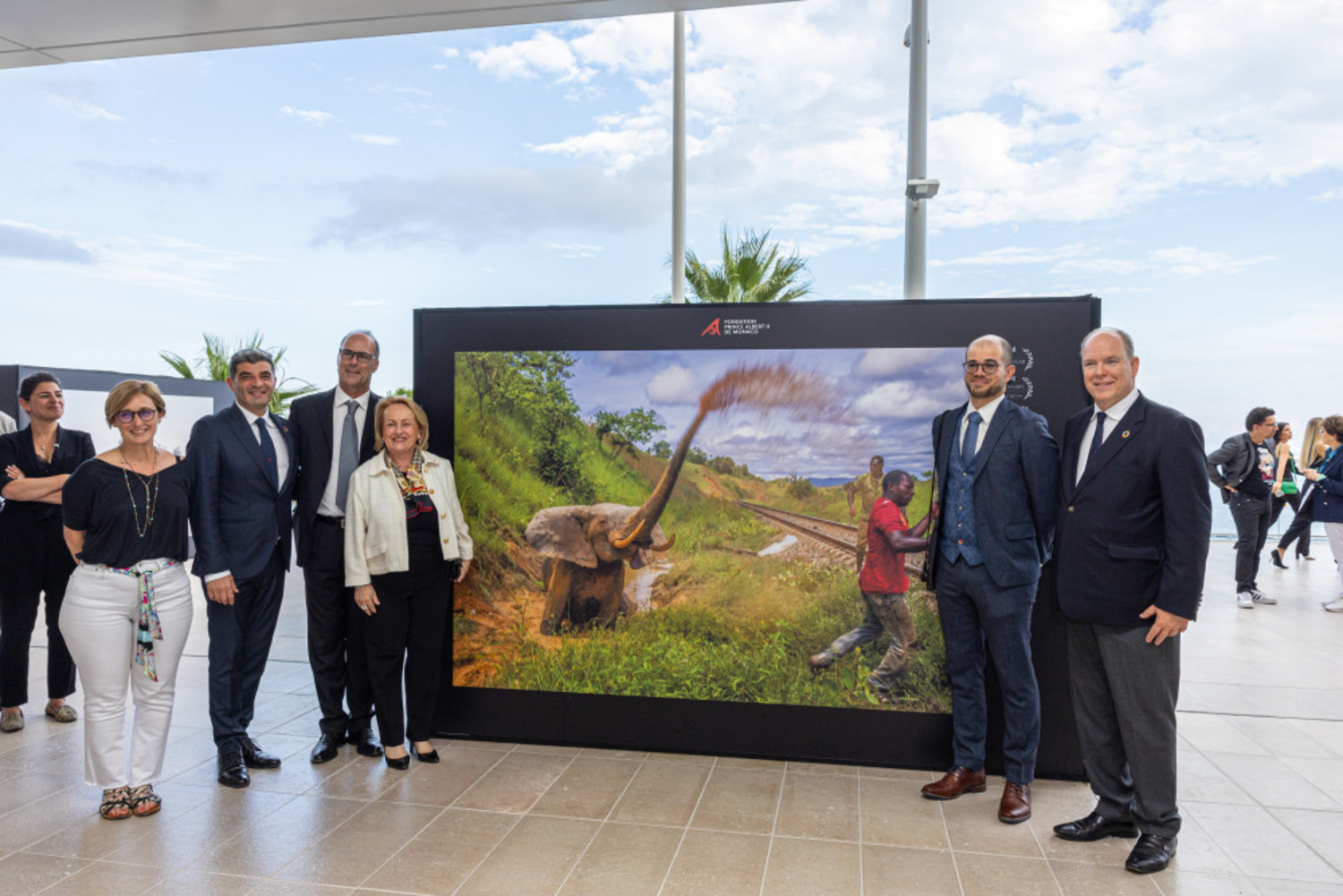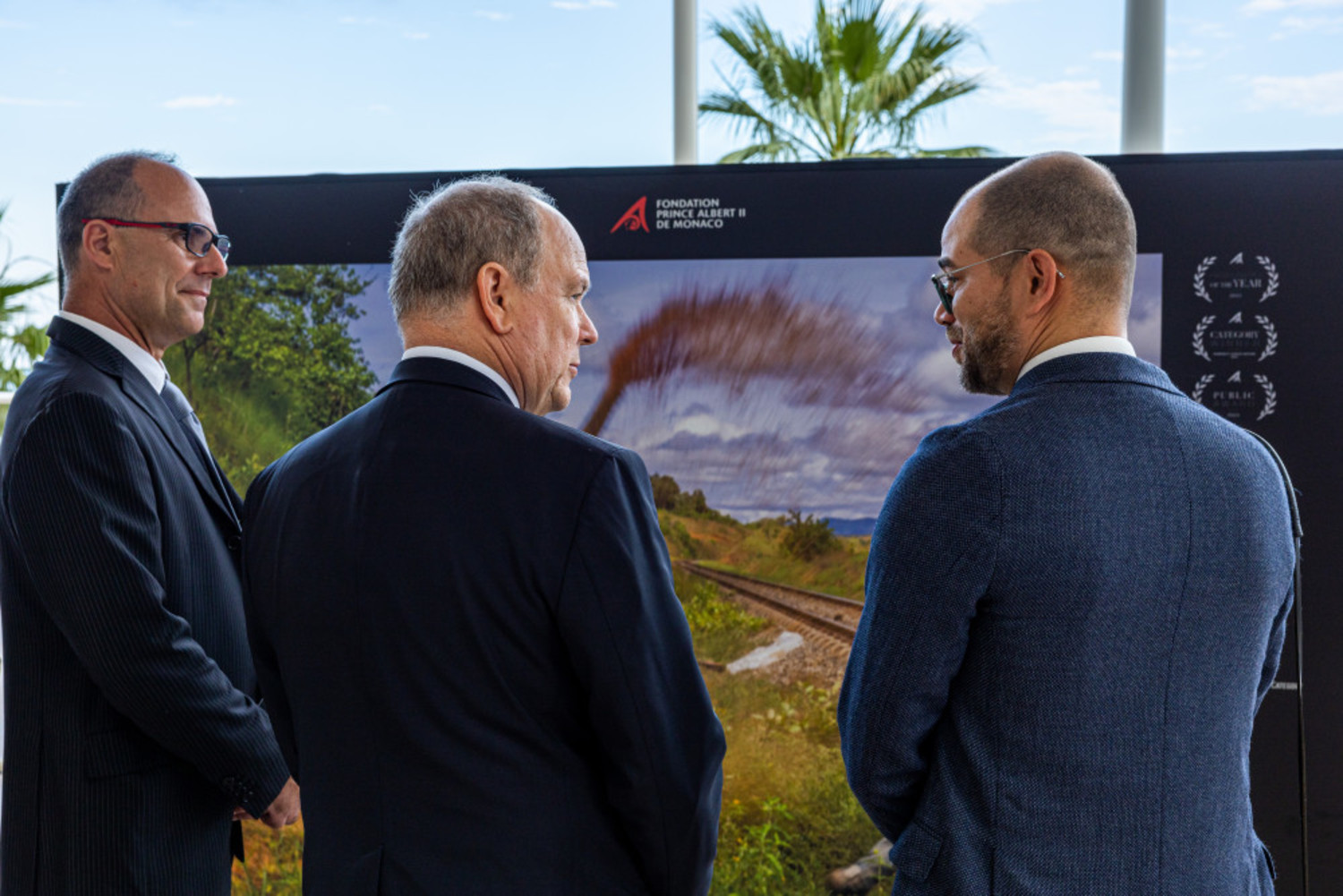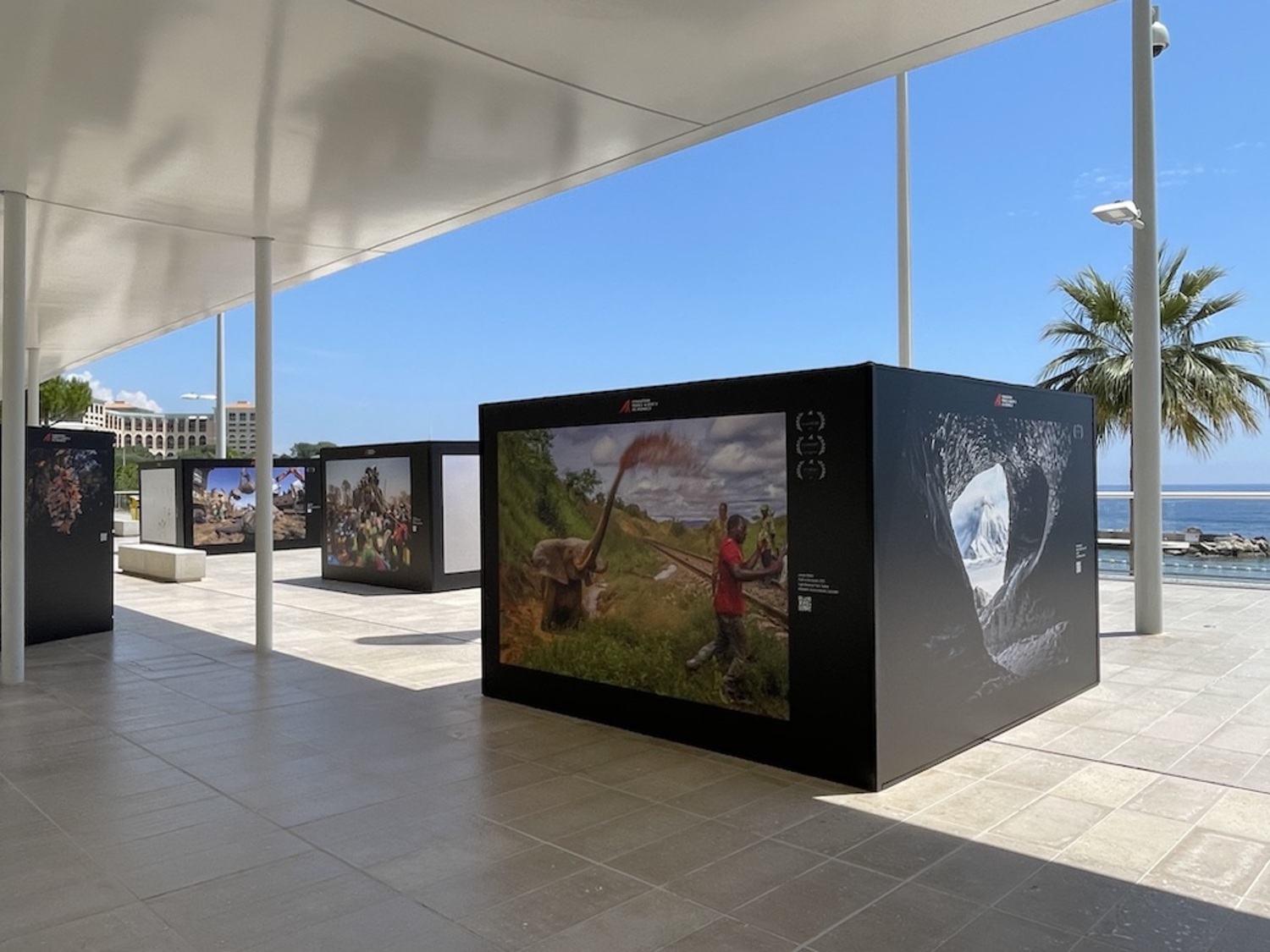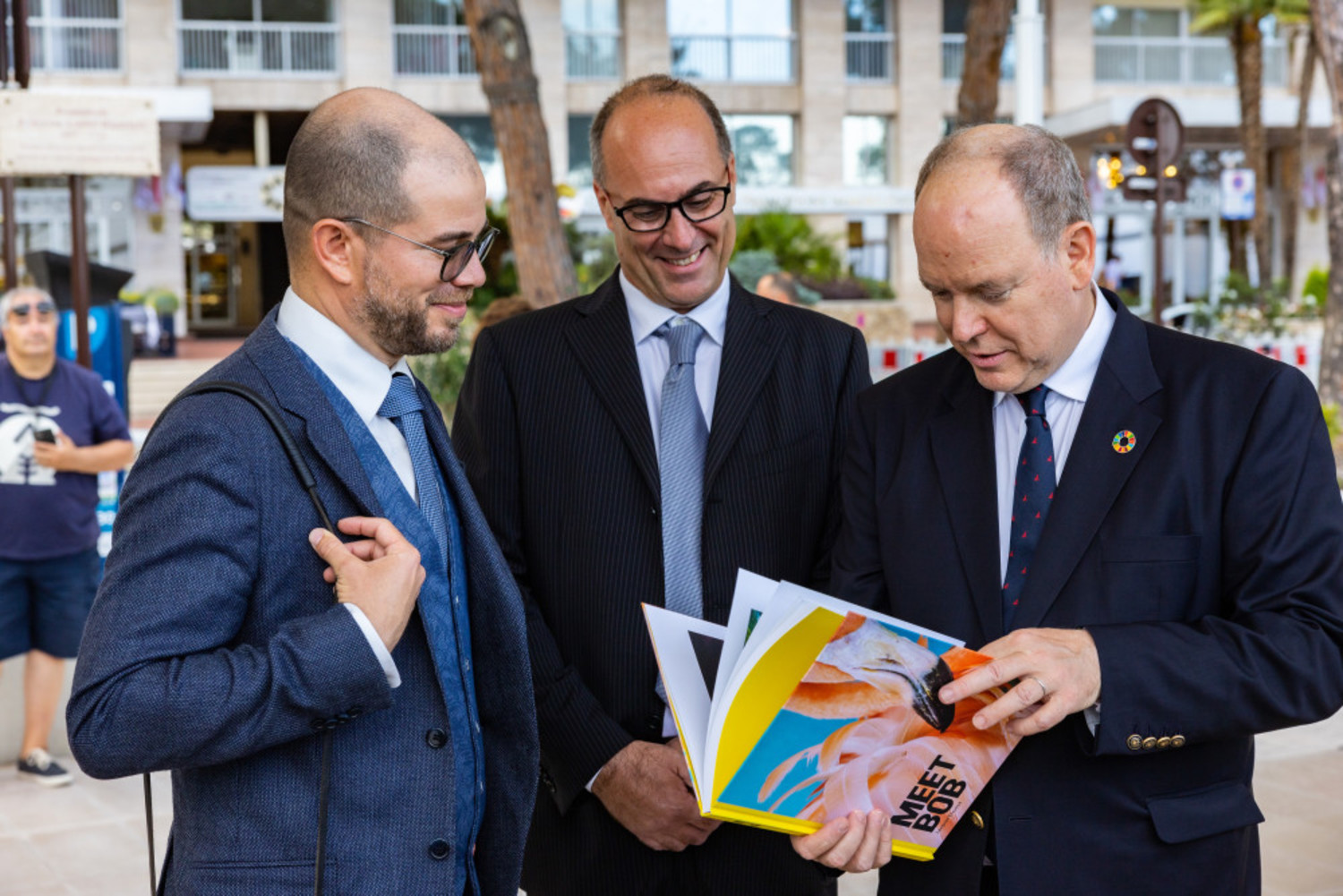The Prince Albert II of Monaco Foundation announces the laureates of its 2023 Environmental Photography Award
Monaco
Events
Press release
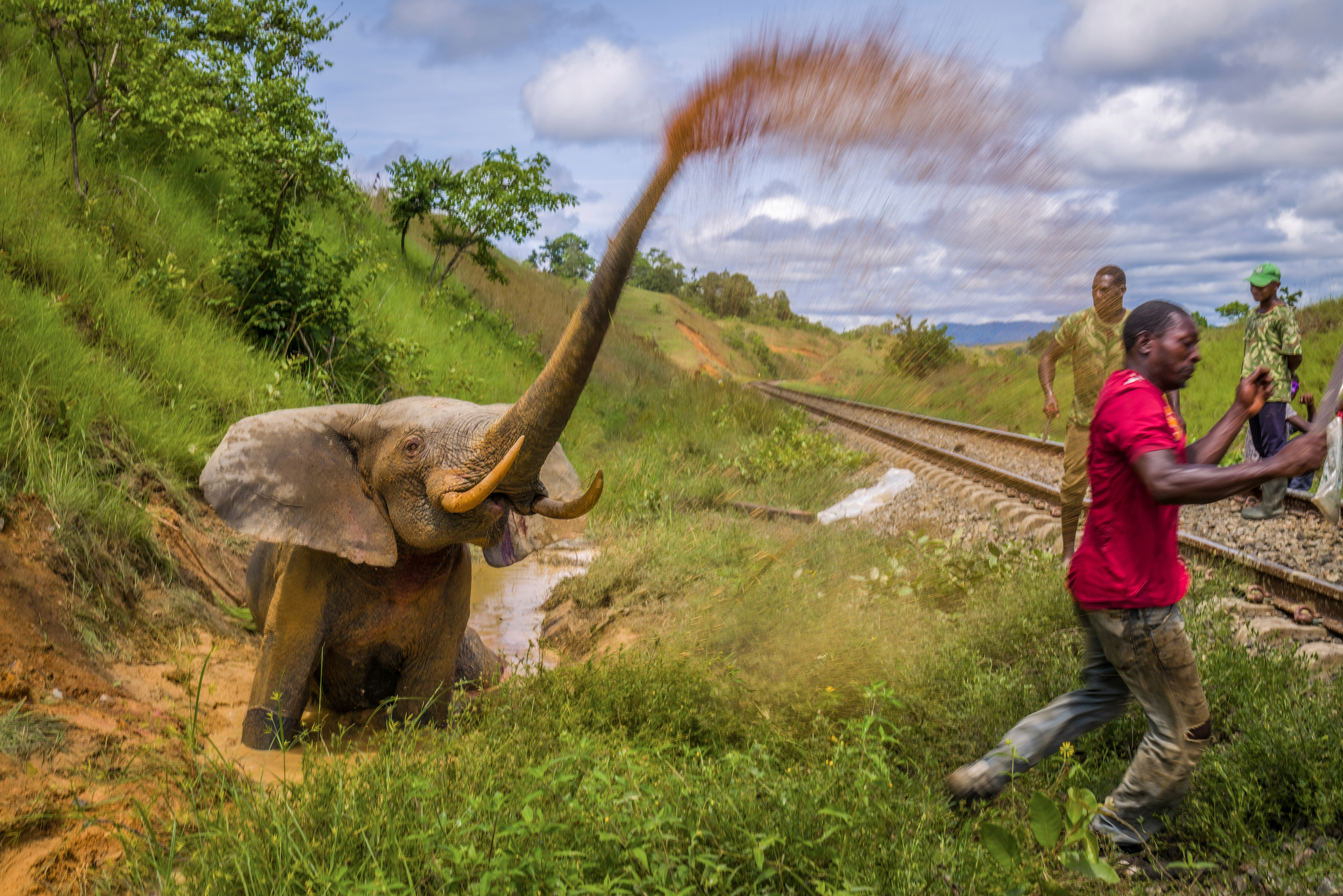
Jasper Doest
Fight to the Death, 2021
Lopé National Park, Gabon
Environmental Photographer
of the Year 2023, category winner "Humanity versus Nature" and Public
Award 2023
© Jasper Doest
Monaco, 2 June 2023 – The Prince Albert
II of Monaco Foundation opened on June 1st the photo exhibition of its
third Environmental Photography Award on the Promenade du Larvotto. It was the occasion
for Olivier Wenden, Vice-President and CEO of the Prince Albert II of Monaco
Foundation, alongside members of the Jury Sergio Pitamitz, Esther Horvath,
Britta Jaschinski and Alexa Keefe, to officially unveil the 2023 winning
photograph and the laureates of the 5 categories of the contest.
The
2023 Environmental Photographer of the Year Award went to young Dutch
photographer Jasper Doest for his photograph Fight to the Death.
The winner in his category ("Humanity versus Nature"), who was voted
the overall winner by his peers and crowned by the public vote, won a total
prize of €6,500 and the privilege of travelling to Ecuador to visit the SEK
International University research base in the Amazon rainforest.
A graduate in ecology and a contributor to National
Geographic magazine, Jasper Doest's creates visual stories that explore the
relationship between humankind and nature. As a true believer in the power of
photography to initiate positive change, Jasper Doest, who has already won
several prestigious awards, is an International League of Conservation
Photographers senior fellow (iLCP) and a World Wildlife Fund ambassador (WWF).
About the Prince Albert II of Monaco Foundation
Environmental Photography Award, Jasper says it is “a powerful catalyst for
positive change”. Adding: “I am deeply grateful for the opportunity to
be a part of it. Winning both the Grand Prize as well as the Public Award for
this photograph, strengthens my belief that we can and will make a
difference if we work together. I am deeply honored to receive this award
and I am excited about the idea of a collective commitment towards fostering a
more harmonious coexistence."
About the photograph Fight to the Death
A tragic reminder of the consequences of human-animal
conflict, this enraged elephant fights for its life after it was struck by a
train transporting manganese through Lopé National Park in Gabon, between
Moanda and Libreville. The animal’s hip was shattered beyond repair. The
elephant was unable to be saved, and following the elephant’s death the park
director took the necessary steps to ensure its meat was distributed to the
local community. Despite the danger posed by regular train accidents in Lopé
National Park and the director’s efforts to identify potential conflict areas,
the railway company has declined to take action and continues to ignore the
risk of running trains at full speed through the park. This is primarily due to
the economic pressure of transporting Gabon’s second largest export product,
manganese, which accounts for 11% of the country’s exports.
The winning photograph
represents a real struggle for its author: “As I recall this gruesome scene
along the railway, I am haunted not only by the tragedy that occurred as the
elephant needed to be killed after the accident, but mainly by the larger story
of human greed that underlies it–there is a railway that runs through a
National Park, primarily for the purpose of transporting a valuable
mineral. While it's tempting to assign blame, I also believe that this
photograph has the power to inspire change for those willing to take
responsibility. Upon receiving this award, I would like to extend the
invitation to all parties involved to gather together and have a meaningful
discussion on how we can collectively put an end to the continuous killing of
these critically endangered animals alongside this railway track. I urge
the corporate community to step up and take responsibility by collaborating with
the conservation world to safeguard our planet's natural resources.
Failure to do so will result in more animals falling victim to the same fate as
the elephant depicted in this photograph.”
Sergio Pitamitz explains
the choice of this image: "This live shot shows an African forest
elephant - classified as critically endangered by the International Union for
Conservation of Nature (IUCN) - in extreme distress. This single elephant,
through his mastery of photography, represents his entire species in the grip of
an uncertain future. Jasper Doest was able to react in a split second to this
sudden event, documenting his story and giving a voice to the forest elephants
of Africa".
He added on the subject
of the difficult selection process: "Choosing just one photo from the
10,000 submitted this year was a difficult task for the members of the jury*,
who analysed in detail the way in which the photographers worked through their
images, and carefully checked that they respected the ethics of wildlife
photography and conservation".
The 2023
competition received almost 10,000 images, submitted by over 2,300
photographers from all over the world, both professional and amateur.
In addition to
the 5 categories and the Public Award, a Students’ Choice was created this year
for highschool students of the Principality, in collaboration with the
Direction de l'Éducation Nationale, de la Jeunesse et des Sports. The Students’
Choice is part of the Foundation's drive to raise awareness of environmental
issues among the younger generation.
Were also awarded:
“Change makers, reasons for
hope" category
Marcus Westberg
Airborne, 2022
Malawi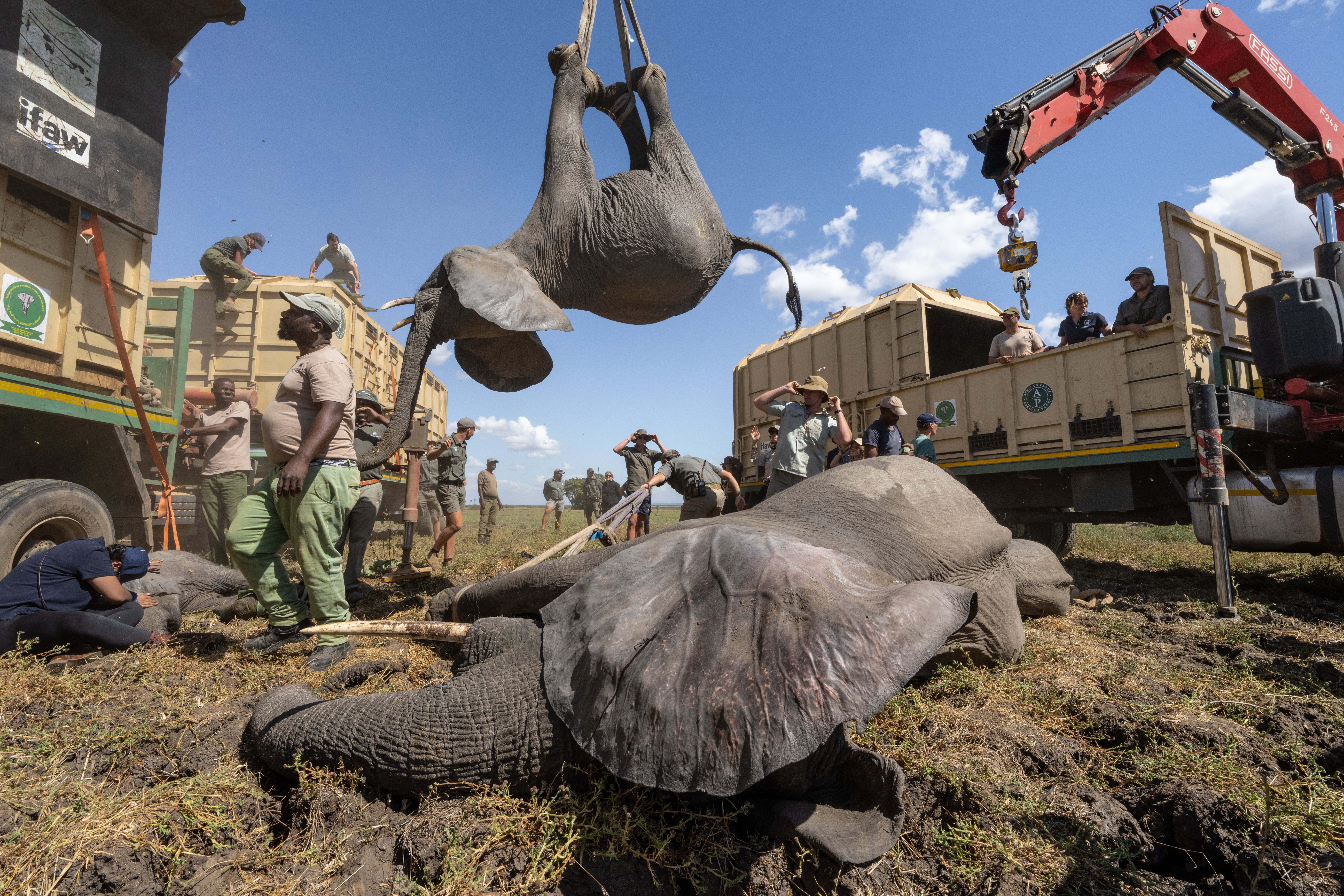 The
photograph shows elephants being moved from Liwonde National Park to Kasungu
National Park, Malawi, under the supervision of conservation specialists. The
method used, which may seem shocking, is nevertheless common practice for
moving elephants. The elephants are first put to sleep, then placed in lorries
using cranes, before being woken up during the journey. All these operations
are carried out with the utmost care and respect for the animals, and help to
regulate populations from one area to another.
The
photograph shows elephants being moved from Liwonde National Park to Kasungu
National Park, Malawi, under the supervision of conservation specialists. The
method used, which may seem shocking, is nevertheless common practice for
moving elephants. The elephants are first put to sleep, then placed in lorries
using cranes, before being woken up during the journey. All these operations
are carried out with the utmost care and respect for the animals, and help to
regulate populations from one area to another.
“Ocean Worlds" category
Simon Biddie
My Kingdom, 2022
Los Islotes, Espiritu Santo National Park,
Mexico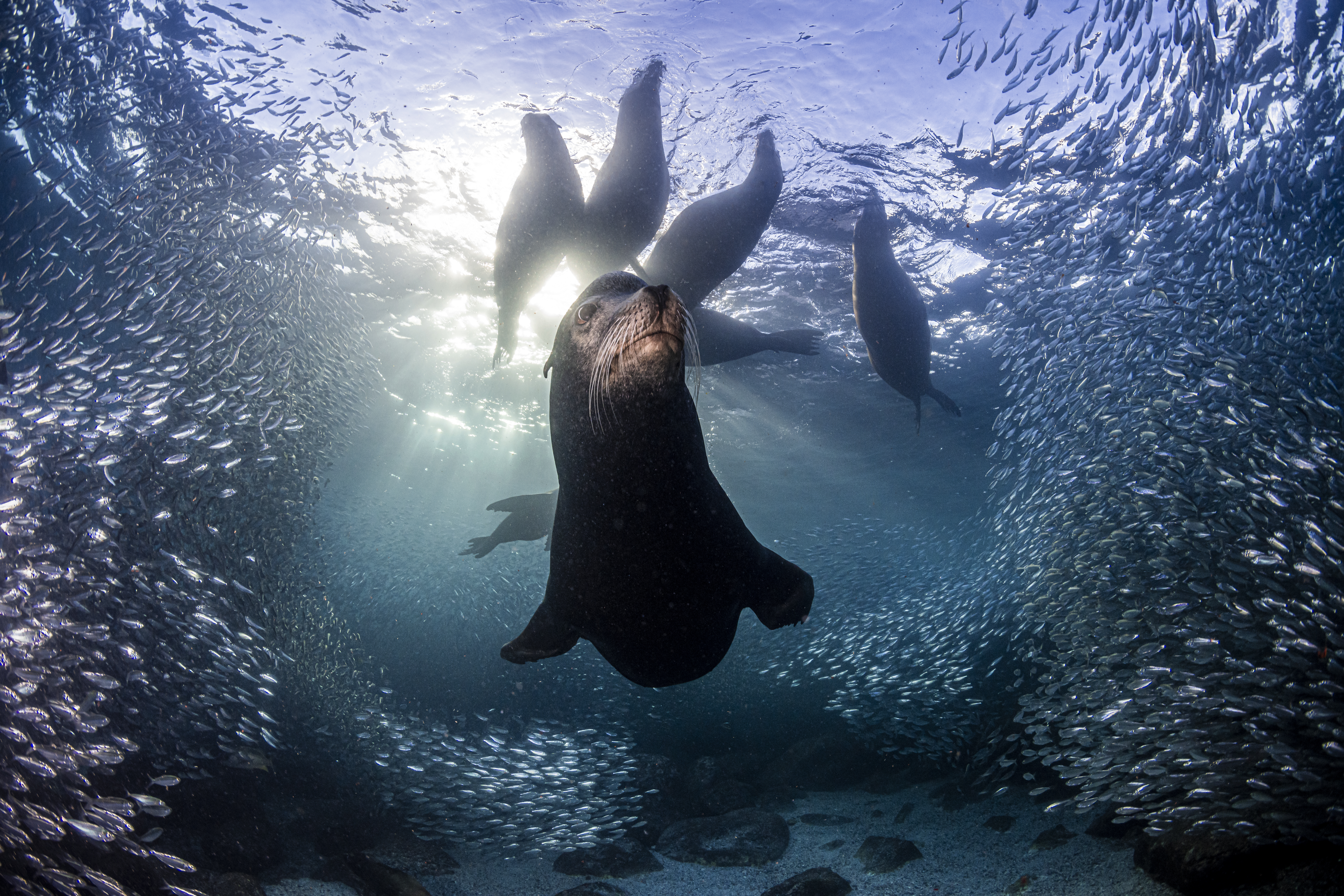 California sea lions enjoy
protected status in Espiritu Santo National Park in Mexico. The region is a
no-fishing zone, which provides them with an environment rich enough in food,
and limiting human activity benefits the stability of their population. The
only threat that remains is that of climate change.
California sea lions enjoy
protected status in Espiritu Santo National Park in Mexico. The region is a
no-fishing zone, which provides them with an environment rich enough in food,
and limiting human activity benefits the stability of their population. The
only threat that remains is that of climate change.
“Into the forest" category
Kallol Mukherjee
Falling Leaves are Blue, 2018
Himalayas, India 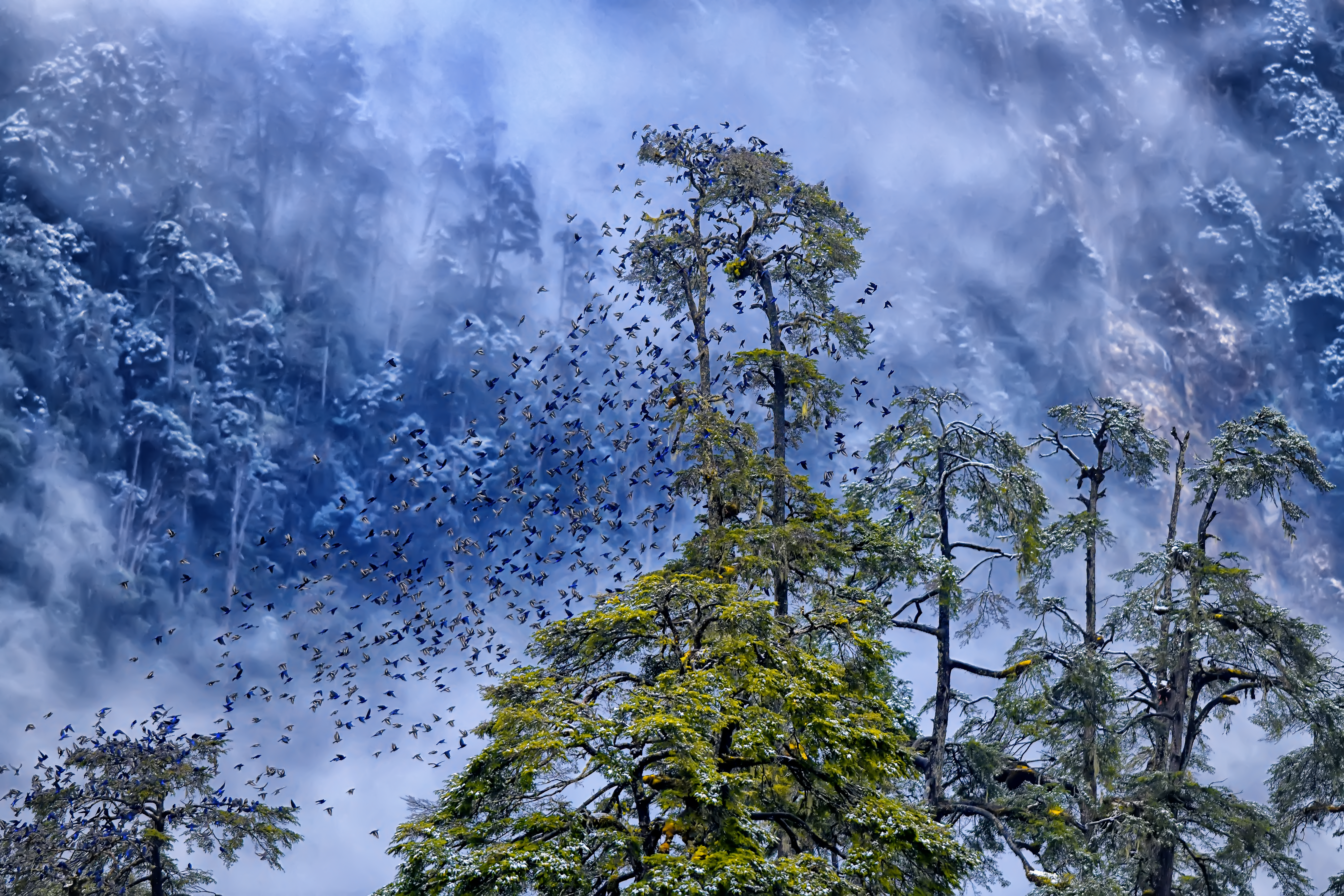 The photographer
captured a snowstorm in the Himalayas at an altitude of 4,267 m, just as a
flock of Grandala birds invaded the landscape, offering a superb view of their
synchronised flight or 'murmurations'.
The photographer
captured a snowstorm in the Himalayas at an altitude of 4,267 m, just as a
flock of Grandala birds invaded the landscape, offering a superb view of their
synchronised flight or 'murmurations'.
“Polar Wonders" category
Franco Banfi
Tiny Umbrella, 2018
Tasiilaq, East Greenland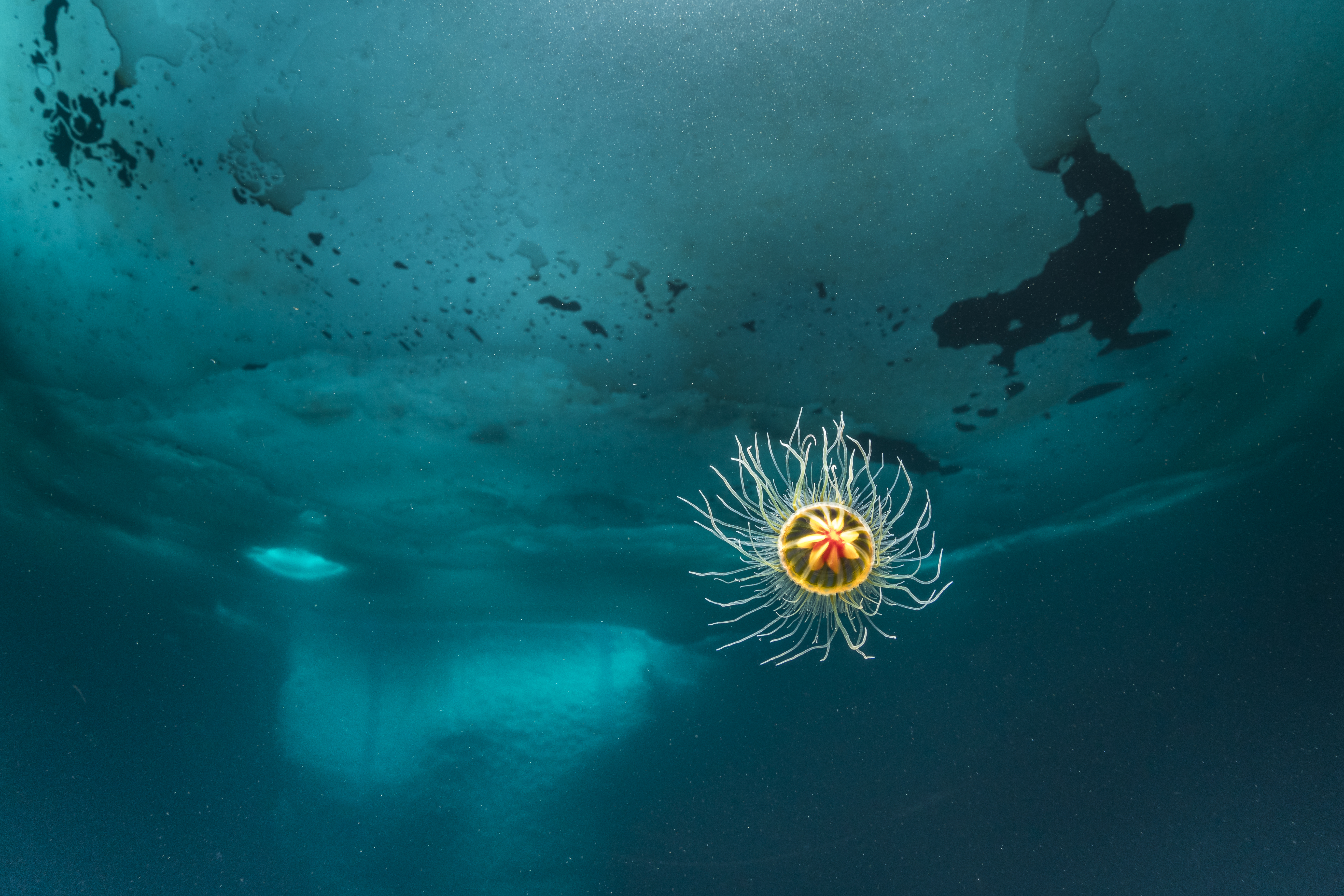 The image features a tiny benthic
hydromedusa with a bell measuring less than a centimetre. This little-known
gelatinous organism lives in deep or polar waters.
The image features a tiny benthic
hydromedusa with a bell measuring less than a centimetre. This little-known
gelatinous organism lives in deep or polar waters.
Students’
Choice 2023
David
Feuerhelm
Baby it’s Cold Out There!, 2019
Mýrdalsjökull glacier, Iceland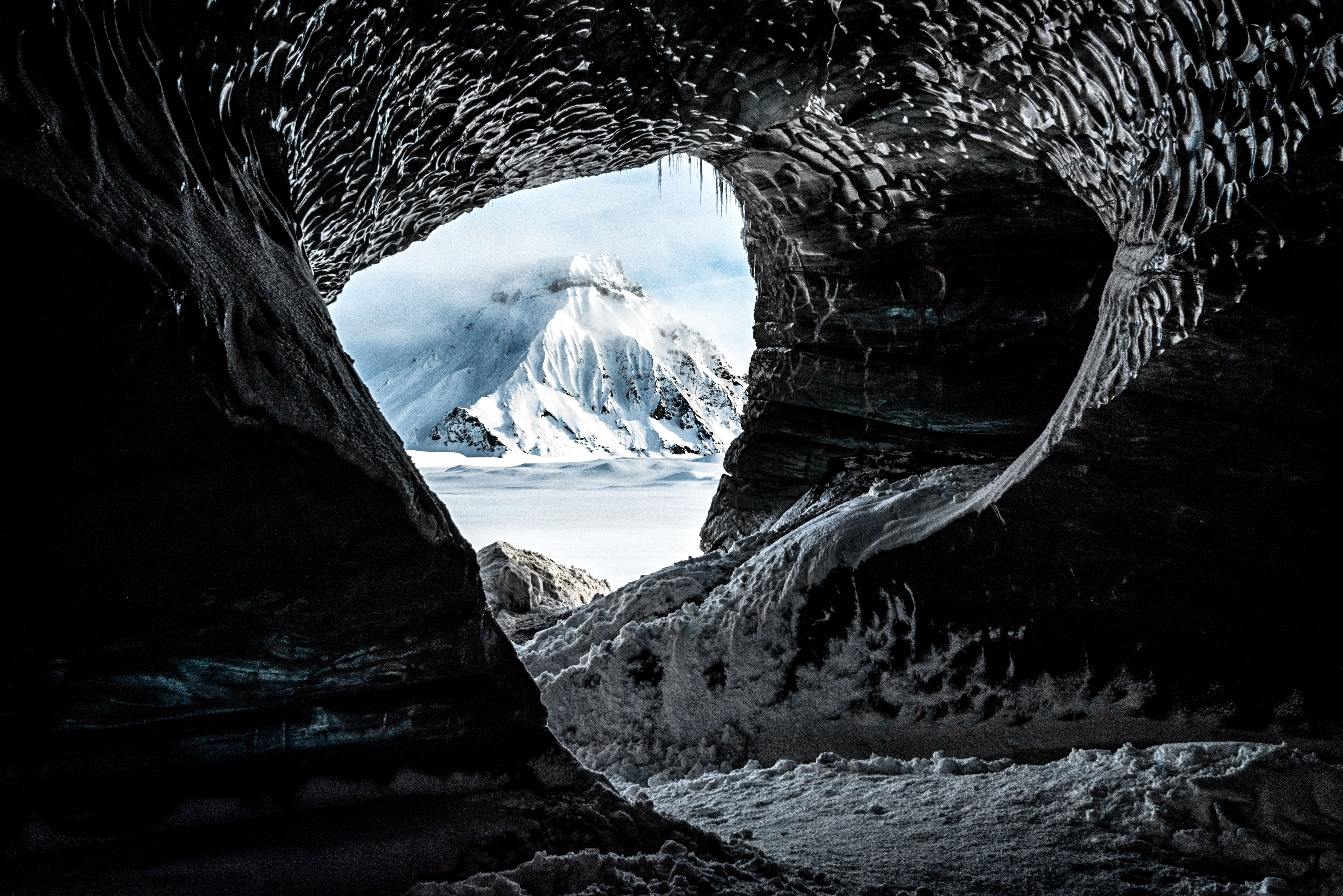 The beauty of Iceland won over
the Principality's highschool students. The Mýrdalsjökull glacier, the fourth
largest ice cap in the country, has many ephemeral caves and landscapes that
seem surreal.
The beauty of Iceland won over
the Principality's highschool students. The Mýrdalsjökull glacier, the fourth
largest ice cap in the country, has many ephemeral caves and landscapes that
seem surreal.
The 2023 edition delivers essential environmental messages, as jury president Sergio Pitamitz explains: "Photography is a powerful tool for giving a voice to threatened wildlife and biodiversity. Thanks to the Environmental Photography Award, photographers are given the opportunity to showcase their images and, above all, their conservation messages". He also praised "the competition's commitment to preserving the environment and the living world."
To continue to raise the profile of the Environmental Photography Award, a new website has been launched www.fpa2photoaward.org and an Instagram page fpa2.photoaward has been created to promote the Award and its talented contributors.
More sustainable structures
This year, the panels of the tripod structures were made from GreenBond,
thanks to the support of Peradotto. GreenBond is an innovative material
made from an aluminium honeycomb panel that is designed to eventually replace composite panels. Unlike Dibond,
which is made from plastic, this material is made from 100% aluminium and is
therefore entirely recyclable.
The Prince Albert II of Monaco Foundation Environmental Photography Award 2023 was supported by Barclays Private Bank and SEK International University.
* The
Jury:
Sergio Pitamitz, President
of the Jury - conservation and wildlife photographer, National Geographic
photographer for National Geographic Expeditions.
Javier Aznar - National
Geographic contributor photographer focused on natural history and wildlife
conservation.
Esther Horvath - National
Geographic contributor photographer, photographer for the Alfred Wegener
Institute for Polar and Marine Research, focusing on documenting climate
research in the polar regions.
Britta Jaschinski - photojournalist
specialising in crimes against nature.
Alexa Keefe - Senior
Photo Editor at National Geographic magazine.
Alex Mustard - underwater
photographer and marine biologist.
Ami Vitale - National
Geographic photographer, filmmaker, writer and speaker.
